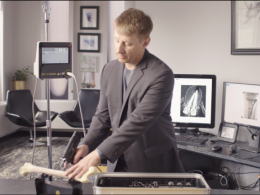Coffee is a daily necessity in many people’s lives. But many people love the taste without the caffeine element and choose decaf. To be decaf in the EU the coffee must have 99.9 per cent of its caffeine content removed. So, how is organic coffee made decaf? Here we will look at the four main ways the caffeine is took out of coffee.
Benefits
Before getting into how you can make coffee decaffeinated, what are the benefits of decaf? There have been some common misconceptions that surround decaffeinated coffee. Coffee on the whole is not to be that bad for your health, it’s actually the biggest source of antioxidants in the Western diet. It has also been linked with the reduced risk of Type 2 diabetes.
Because of the benefits of coffee without the caffeine, decaf is becoming more popular with younger generations. Emmanuel Dias from the Swiss Water Decaffeinated Coffee Company says that people “are ready to pay for a good decaf because they are looking for a good coffee and they want to control their coffee intake.”
Indirect Solvent
The indirect solvent process is a common method in Europe that uses chemicals to remove the caffeine. The green coffee beans—this is the colour of the beans before they are roasted—are soaked in hot water for a few hours to extract most of the caffeine and the compounds that give the beans their flavour.
The beans are then removed from the water and the water is treated with methylene chloride or ethyl acetate, a natural chemical often found in fruit. The chemicals then bond with the caffeine molecules. The mixture then can be heated to remove the solvent and the caffeine molecules via evaporation. The beans are then reintroduced to the mix to re-absorb the oils and chemicals that give the coffee beans flavour. This water is then re-used in other batches to give the beans more flavour.
Direct Solvent
This is a little less complicated than the indirect process. The green coffee beans are steamed for half an hour to open their pores before being exposed to a solvent for around 10 hours to extract any caffeine. The solvent is drained and the beans repeatedly washed to remove any traces of caffeine.
Swiss Water
This process is used for mostly organic decaf coffee due to it not involving any chemicals. It was first developed in Switzerland in the 1930’s but was only made commercially in the 1980’s. The green beans are first soaked in very hot water to dissolve the caffeine. The water is then extracted and passed through an activated charcoal filter. The filter captures the large molecules but allows the smaller molecules and oils that give coffee its flavour, resulting in un-flavoured beans and coffee flavoured water. That batch of beans is discarded, but the flavoured water is used to remove the caffeine from a new batch of beans. As the water contains the oils and molecules that provide coffee with flavour, the oils and molecules from the second batch of beans can’t dissolve as effectively. This means the caffeine will be extracted from the second batch of beans, but they will keep most of their flavour.
CO2 Carbon Dioxide
In this process green coffee beans are soaked in water and placed in a steel container where liquid CO2 is forced into the sealed container, extracting the caffeine from the beans and leaving the flavour behind. The CO2 is then removed to become a gas once more and the caffeine molecule is left behind.
So, these are the four main ways coffee can be made decaf. Hopefully, this has aided your understanding of how your coffee becomes decaf and allows you to make more informed choices in your coffee tasting.
Sources
https://www.traidcraftshop.co.uk/drink/fair-trade-coffee/decaf-coffee









